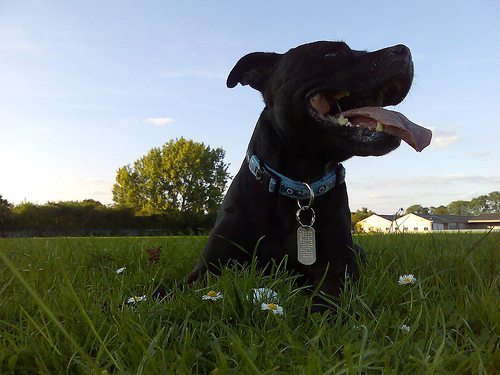By Sherry L. Granader.
In our previous article, “5 Easy Ways to Prevent Heat Stroke in your Dog,” you learned about heat stroke, the signs you need to look for and the easy ways you can avoid heat stroke in your dog. But sometimes, even with the best of intentions, your dog may still be overcome with heat stroke, especially

Even Healthy Pet’s At Risk
As your pet’s guardian, it’s important to be prepared with the following information to help treat your dog and avoid the serious side effects of heat stroke. “Even the healthiest pets can suffer from dehydration, heat stroke and sunburn if overexposed to the heat,” says Dr. Lila Miller, ASPCA Vice President of Veterinary Outreach, “and heat stroke can be fatal if not treated promptly.”
Dogs primarily cool themselves through panting. But when the air temperature is the same as their body temperature, panting no longer cools their body. This is the beginning of heat stroke that can lead to dangerous complications – or even death – if left unchecked.
Take Immediate Action
Once the symptoms of heat stroke appear, take immediate measures to cool your dog. Follow these instructions provided by Pets.webmd.com and eHow.com:
- Move your dog out of the heat and into an air-conditioned area. For mild cases, this may be enough to resolve the heat stroke episode.
- Monitor your dog’s condition by taking his temperature every 10 minutes. Recommended to take the temperature rectally for greater accuracy.
- If the rectal temperature is above 104° F, begin spraying the dog with a garden hose or immersing (but not submerging) him in a tub of cool water for up to two minutes. Do NOT use ice water as this could cool the dog too quickly and lead to hypothermia, shock, cardiac arrest and bloating.
- Alternatively, place the wet dog in front of an electric fan or continuous cool air flow. Continue to wipe the paws with cool water to facilitate the cooling process. Wipe down the body (including the groin and armpit areas) with cool packs or wet towels. Do not cover your dog with a wet towel or blanket as this inhibits evaporation and works against effectively cooling your dog.
- Keep monitoring the dog’s rectal temperature and once it falls below 103° F, stop the cooling process and dry the dog.
- If your dog’s rectal temperature is above 107° F, immediately rush your dog to your veterinarian or closest pet emergency facility. Your dog is suffering from severe heat stroke and could begin to suffer irreversible damage to the kidneys, liver, gastrointestinal tract, heart and brain, warns DogChannel.com.
- Cooling your dog is your first priority. Hydration is next, once your dog’s temperature is decreasing. Offer small amounts of cool water, but do not let them gulp it down because this could lead to vomiting or bloat. Offer chicken- or beef-based broths if your dog won’t drink water. Avoid Gatorade-like drinks; they are not formulated for canine physiology, advises DogChannel.com.
Now that you know about heat stroke in dogs, the signs to look for, the ways to avoid heat stroke and the necessary steps to treat heat stroke if it does happens to your dog, both you and your dog can enjoy an active and safe summer!
Reviewed and Approved by Dr. David L. Roberts, DVM
Photo: Courtesy of Mark Hillary via Flickr (CC by 2.0)
